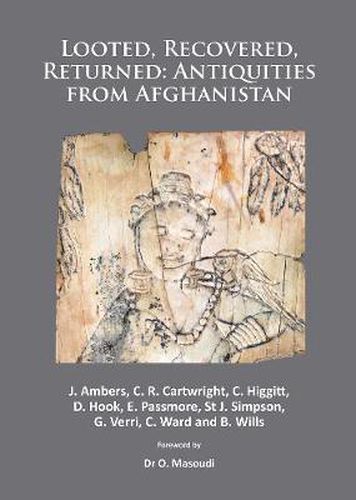Readings Newsletter
Become a Readings Member to make your shopping experience even easier.
Sign in or sign up for free!
You’re not far away from qualifying for FREE standard shipping within Australia
You’ve qualified for FREE standard shipping within Australia
The cart is loading…






The Begram ivories are widely considered to be miniature masterpieces of Indian art and are one of the largest archaeological collections of ancient ivories. They were excavated at the site of Begram, in northern Afghanistan, in 1937 and 1939 and belong to a period when Afghanistan, Pakistan and northern India were united under rulers of the Kushan dynasty. Divided soon afterwards between the National Museum of Afghanistan in Kabul and the Musee national des arts asiatiques-Guimet in Paris, the collection in Kabul suffered a disaster during the civil war which ravaged the country during the early 1990s. Some of the pieces were successfully concealed by museum staff but most were stolen, hundreds have since been reported in different collections and very few have yet been recovered. In 2011 a group of twenty bone and ivory plaques was generously acquired for the National Museum of Afghanistan by a private individual. These were scientifically analysed, conserved and exhibited at the British Museum and returned to Kabul in 2012. This book describes their story from excavation to display and return, with individual object biographies and detailed scientific analyses and conservation treatments. It also discusses how these objects have attracted very different interpretations over the decades since their discovery, and how the new analyses shed a completely fresh light on the collection. It is lavishly illustrated in full colour, and includes many previously unpublished views of the objects when they were originally exhibited in Kabul. This book is essential reading for anyone interested in the archaeology of Afghanistan, Indian art, polychromy, museum studies, object biographies or the history of conservation.
$9.00 standard shipping within Australia
FREE standard shipping within Australia for orders over $100.00
Express & International shipping calculated at checkout
The Begram ivories are widely considered to be miniature masterpieces of Indian art and are one of the largest archaeological collections of ancient ivories. They were excavated at the site of Begram, in northern Afghanistan, in 1937 and 1939 and belong to a period when Afghanistan, Pakistan and northern India were united under rulers of the Kushan dynasty. Divided soon afterwards between the National Museum of Afghanistan in Kabul and the Musee national des arts asiatiques-Guimet in Paris, the collection in Kabul suffered a disaster during the civil war which ravaged the country during the early 1990s. Some of the pieces were successfully concealed by museum staff but most were stolen, hundreds have since been reported in different collections and very few have yet been recovered. In 2011 a group of twenty bone and ivory plaques was generously acquired for the National Museum of Afghanistan by a private individual. These were scientifically analysed, conserved and exhibited at the British Museum and returned to Kabul in 2012. This book describes their story from excavation to display and return, with individual object biographies and detailed scientific analyses and conservation treatments. It also discusses how these objects have attracted very different interpretations over the decades since their discovery, and how the new analyses shed a completely fresh light on the collection. It is lavishly illustrated in full colour, and includes many previously unpublished views of the objects when they were originally exhibited in Kabul. This book is essential reading for anyone interested in the archaeology of Afghanistan, Indian art, polychromy, museum studies, object biographies or the history of conservation.